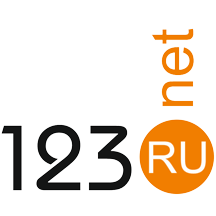Marin Voice: Remembering the sacrifice of Americans in World War I on Veterans Day
Today there will be flowers in front of the Marin War Memorial in honor of the men who fought in World War I, and all of the American men and women who have worn a uniform since then.
We say, now, that Memorial Day is to honor the memory of those who have died, Veterans Day is for all who have served. But, originally, Veterans Day was known as Armistice Day.
The last veterans of World War I died as extremely old men years ago. In the collective memory of most Americans, the horrors of that war have faded compared to World War II. The bronze doughboy at the Marin War Memorial stands as a lonely and important symbol of World War I, and of an era that, in retrospect, was desperate to find a moral silver lining in a war that genuinely confused many of the men on the ground.
My great grandfather, Charles August Nelson, was a veteran of the Great War. He went to France in 1917 as a member of the American Expeditionary Force. Historians call the men of the AEF the “unlucky few.”
Of the roughly 4.8 million American men in uniform during World War I, less than three million went overseas. Of the three million who saw foreign service, barely two million American men and women made it to the infamous Western Front. Just under a quarter of a million men of the AEF were listed as casualties. That included men who were killed in combat, wounded and died later as a direct result of their wounds, or wounded but not mortally wounded. To those numbers should be added the names of men like my great grandfather, who were the victims of chemical warfare.
My great grandfather went to France as a broad-shouldered bright-eyed young man, and came home from war on two canes. He died barely 13 years later before his 35th birthday. He was a member of the American “unlucky few” who witnessed the horrors of World War I on the Western Front.
My great grandfather and a few hundred thousand other American soldiers joined an unlucky fraternity in France.
For most Americans, World War I has faded to the rank of a third-tier conflict. We have lost more men in other wars. But, without a doubt, World War I was the most brutal war of the 20th century, and it cast a long shadow as Americans uneasily confronted the dawn of World War II.
But, there was an optimism in the era of the Great War that we should remember today. Nov. 11 was, originally, Armistice Day. Early Armistice Day celebrations were simultaneously somber and wildly optimistic. The men of the AEF genuinely believed they had paid the United States’ blood debt to France. Sending America’s sons marching into “No Man’s Land” in 1917 was America’s bloody belated “thank you” to the people of France for sending French volunteers, guns, ships and gold to aid George Washington during the American Revolution.
More significantly, in 1920 and 1921, when Marin citizens were planning and paying for our bronze doughboy, Americans genuinely believed we, collectively, had done the responsible thing. The soldiers of the Great War, the men of the AEF who saw combat in the trenches, genuinely believed that their sacrifices, the sacrifices of their brothers in arms who didn’t make it home, were for future generations.
On Veterans Day it is eerie to see the bronze doughboy next to the memorials for later wars. If we know anything about World War I we are forced, always, to ask ourselves what it meant in the context of later wars.
But, the reality of World War II, the horrors of the Korean War, the Vietnam War, Desert Shield, Desert Storm and our more recent long wars in Afghanistan and Iraq shouldn’t make us forget the power of that moment of silence after the 11th minute of the 11th day of the 11th month of 1918. On Veterans Day we should remember, and thank, our veterans, but also remember the original weary optimism of the first Armistice Day.
Sarah Nagle, of Novato, is a descendent of a veteran of the AEF and has a degree in American history.
